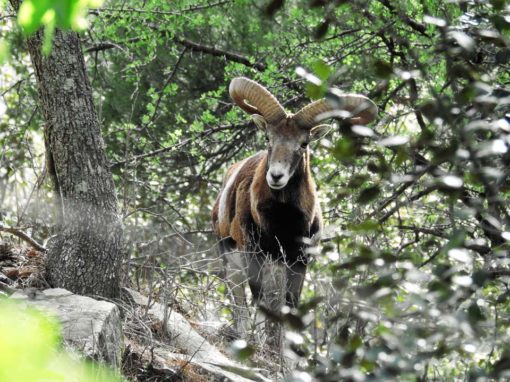Cypress
On small stretches we find other species, such as cypress trees (Cupressus sempervirens). It is a tree that reaches a height of 30 meters and is a shape of an obelisk.
The bark of the tree is divided into stripes that fall apart and fall. Its leaves are needle-like, and as they get older in age, they get scales. The cypress cones are spherical in shape and have pairs of wood-tipped pins coming out of the axis of each cone. These scales when fertilized carry several seeds that mature every second year. The cone opens 2 years later.
The name of the tree comes from a reference from the composite of the Greek words Kyo = produces and the parissos = isometric and is due to the fact that the growth of the Cypress is symmetrical. Others claim that the tree was worshiped in Cyprus, hence its name (Cuprus> Cupresus).
This tree is the emblem of melancholy. It was dedicated to Pluto, the god of Hades. Mythology says that a young man from Kea called Kyparissos, died of sorrow for the loss of his beloved deer, pleaded to Apollo to keep his memory alive and make him immortal, so the god transformed him into a cypress tree. The tree is considered mournful and adorns temples and monuments. Egyptian sarcophagi, doors of ancient churches, sacred boxes and cases, as well as the doors of royal palaces of the ancients, numerous idols and many representations were also made of cypress wood. Plato’s laws were engraved on plates of this wood.
Location
Flora - Fauna
Crataegus Azarolus (Hawthorn)
The Hawthorn (crataegus azarolus) is a resilient and strong bush and/or tree of the Mediterranean. It thrives in the Troodos mountains up to an altitude of 1800 meters. In soils very acidic to very alkaline (Ph 5-9). It grows slowly and can reach up to
Cyprus Cedar
In small areas there are other species such as Cedrus brevifolia and Cupressus sempervirens. It is known from antiquity and is mentioned by Theophrastus and Pliny the Elder as a very important forest tree of that time. The Cypriot cedar is one of four
Fenced Area with Moufflons (Platania Excursion Area)
Next to the Platania Excursion area, one can admire the wild, Moufflon of Cyprus in a specially fenced area. The Moufflon (Ovis orientalis ophion) is the largest land mammal and an endemic species of Cyprus and is rightly described as the most importan
Juniperus phoenicea (Juniper Tree)
At lower altitudes one will find the Maquis forests, one of the predominant species is the Juniper tree (Juniperus phoenicea). Restricted to the area of Troodos, in regions with an altitude of 1000 to 1950 m (Prodromos, Kryos Potamos, Chionistra, Alm










